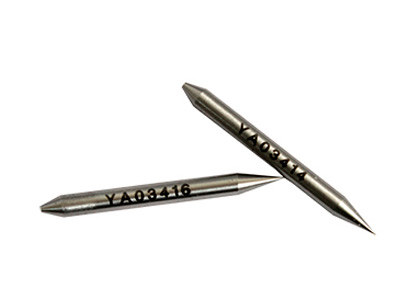Indenter is the part of the hardness tester that directly contacts the workpiece. The normal use of the indenter is directly related to the accuracy of the hardness measurement value. Our after-sales maintenance engineers often encounter large deviation of the test results caused by improper use of the indenter, and even the hardness tester can not be used normally.

For example, a customer reported that the measurement of the Barcol hardness tester was inaccurate, and the calibration and adjustment were done as required. After receiving the instrument, the after-sales engineer of our company found that the problem was on the pressure needle of the instrument. Put the pressure needle brought back randomly on the industrial magnifying glass, and we found that there are grinding marks on the tip of the pressure needle, which is obviously treated. After communication, it was learned that the previous use of the Barcol hardness meter accidentally pressed onto a steel plate. The steel plate was thick and the hardness value was high. At that time, it felt that the tip of the pressure needle was blunt. The user polished it gently with sandpaper and felt that the pressure needle was sharp again. Therefore, after continued use, it was found that there was a large deviation from the hardness value of the same batch of aluminum profiles measured before, There is no problem to change another Barcol hardness tester to measure the hardness of aluminum profile.
Here we remind you that the pressing needle is a particularly precise part. The angle and size of the needle tip are very precise. You can't handle the pressing needle at will. The pressing needle is a consumable. In case of the above situation, please replace the pressing needle in time. When the pressure needle contacts the measured object during the measurement, it shall be pressed down carefully and stably. Sliding sideways on the hard object, especially the rough hard object, will damage the pressure needle. If it is damaged, please replace it in time.
